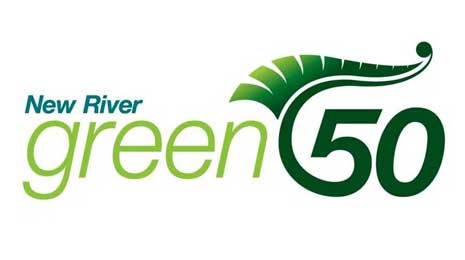CrestClean ranked 11th on the first ever ‘Green 50’ list

A booming green sector is shown by the New River Green 50, NZ’s first definitive list of companies making money improving the environment.
The Green 50 list ranks New Zealand companies helping the environment.
With being awarded 11th place on the listing, CrestClean has been acknowledged as being a successful participant in the green economy.
CrestClean was able to demonstrate strong environmental initiatives and compliances with our full organisational change to using Environmental Responsible chemicals. Our 100% uptake of microfibre cloths and mops has lessened the use of chemicals, which reduces the environmental impact. The ranking on the Green 50 list is recognition that our environmental compliances have sustainable business benefits too.
The Green 50 list was developed from in-depth research and interviews with 320 companies that have a product, service or technology to improve the environment.
The companies were then ranked by a mixture of revenue and growth rate.
Highlights
- New River Green 50 companies total NZ$1.1 billion in revenue
- New River Green 50 companies growing at 15 times the speed of the NZ economy
- 71% of New River Green 50 companies are exporters versus 18% for NZ firms in the economy
- The most common area of environmental improvement is reducing pollution
- 2nd most common is reducing greenhouse gas emission and 3rd is resource recovery
New River Green 50 companies operate in 14 sectors. Agriculture is the sector with the most Green 50 companies.
“It’s still early days for this sector – most of the companies involved are small or medium-size. It doesn’t represent a large part of the New Zealand economy yet but the point is, it’s growing rapidly”, says Wayne Cartwright, the survey organiser.
New River managing director Roger Parker said with a combined revenue of $1.1bn, the list demonstrated the value of the green economy in New Zealand.
“In doing this research, we found that the individual companies on the Green 50 are growing at a phenomenal rate, on average 260% per annum. As a segment, the Green 50 grew at 15 times the speed of the New Zealand economy over the last year,” he said.
“What’s more, the most companies were in agriculture, which means there are a lot of farmers buying products, services and technologies to improve the environment, something we hear little about. It’s also encouraging to see the number and performance of larger companies that don’t necessarily make the list because improving the environment is not their core business, but are still doing lots of incredible stuff in the sustainability space and improving their performance as a result.”
Exporters made up the majority (71 per cent) of companies on the list, compared with 18 per cent of the New Zealand economy. The most common area of environmental improvement was reducing pollution (52 per cent of companies) followed by reducing greenhouse gas emissions (40 per cent) and resource recovery (30 per cent).
In total, 320 companies were short-listed and studied, and divided into two ‘types’ based on how they improve the environment and make money. ‘Type One’ companies are those that have a product, service or technology to improve the environment. Only Type One companies are on the Green 50 list because they meet the criterion, which is that their product, service or technology generates revenue improving the environment, and this makes up more than 50 per cent of their business.
‘Type Two’ companies are where they lower their environmental impact usually to make an existing business more environmentally sustainable. These are companies trying to green a traditional business, where the products, services or technologies sold are not to improve the environment as such. These are primarily cost reduction / compliance / reputation-models.
The list of leading companies doing environmental sustainability initiatives includes many of New Zealand’s top companies like Fonterra, Air NZ and Fulton Hogan. The research suggests environmental sustainability in leading companies is now mainstream.
Wayne Cartwright, former Professor of Strategic Management at the University of Auckland and editor of the book Strong Sustainability for New Zealand, said the results were very encouraging, and the research has substantial potential value through analysis and reporting that can inform business strategy and sector policy.
“These findings should help to bring the green sector into greater prominence in terms of economic development policy, and should also help to reduce the perceptions of risk that have deterred investment in the sector and affected the credit available to companies.”
The full New River Green50 database can be downloaded for free at New River’s website.
